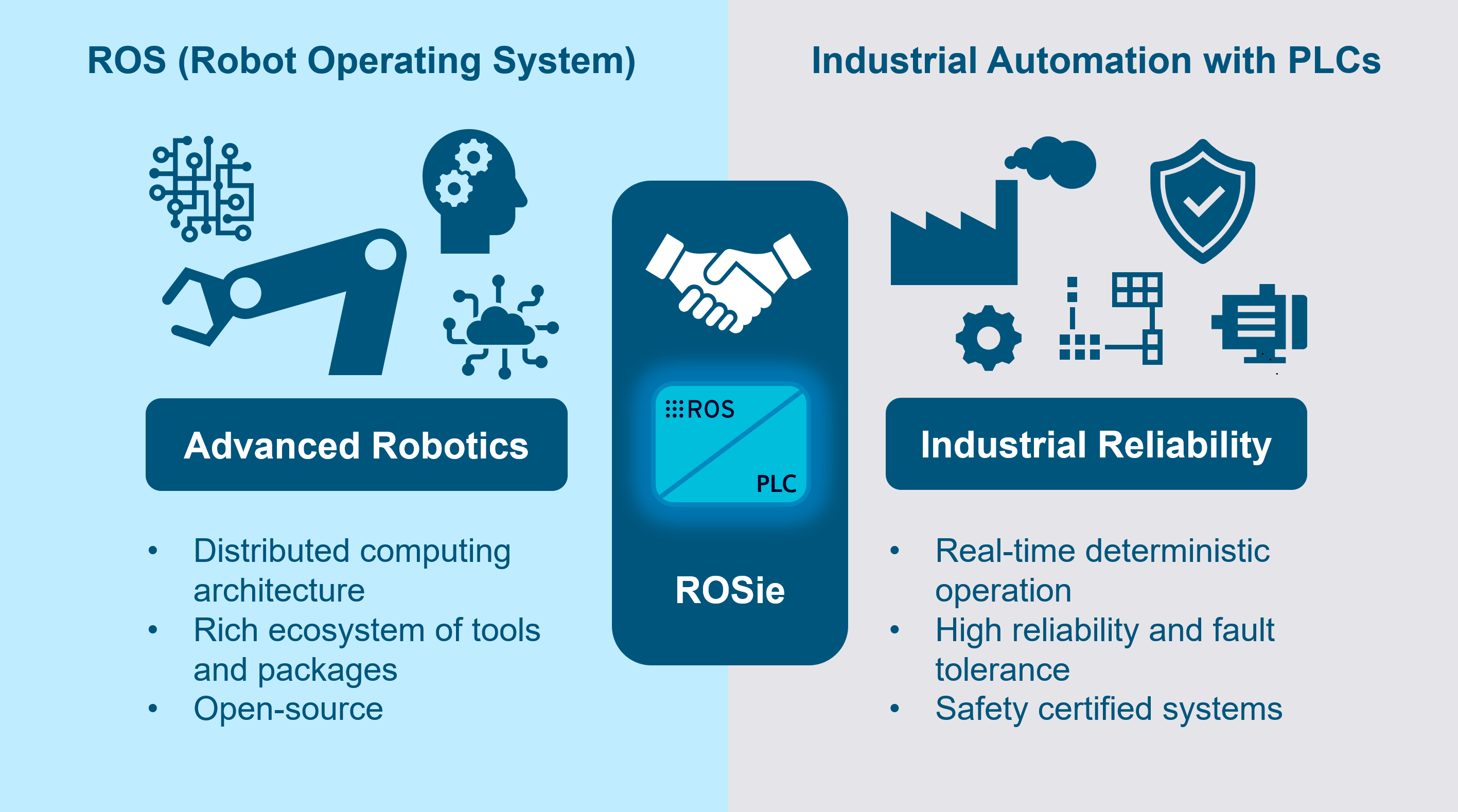Overview of ROS and PLC Technology¶
Programmable Logic Controller (PLC)¶
Programmable Logic Controllers (PLCs) are robust industrial computers specifically designed for automating manufacturing processes. They are widely deployed in factory automation, industrial control systems, and production lines where reliability and consistent performance are critical.
PLCs incorporate robust safety features including failsafe operation, safety-certified hardware variants, and compliance with industrial safety standards (IEC 61508/61131).
- Key Features:
- Real-time, deterministic operation
- High reliability and fault tolerance
- Designed for 24/7 operation in harsh environments
- Robust safety features
- Programming: Ladder Logic, Structured Text, Function Block Diagram
- Strengths: Reliability, stability, industrial standards compliance
- Limitations: Limited computational power, specialized programming knowledge
Robot Operating System (ROS)¶
The Robot Operating System (ROS) is a flexible framework and middleware that facilitates robot software development. It has become the standard platform for research robots, autonomous vehicles, and service robots where adaptability and access to advanced capabilities are required.
- Key Features:
- Distributed computing architecture
- Rich ecosystem of tools and packages
- Hardware abstraction capabilities
- Programming: Python, C++, with node-based communication model
- Strengths: Flexibility, extensive libraries, active open-source community
- Limitations: Not inherently real-time, complexity, steeper learning curve
Integrating PLCs with ROS¶
Integrating PLCs with ROS creates a powerful synergy that leverages the strengths of both technologies.
PLCs contribute industrial-grade reliability, deterministic operation, and safety certification essential for critical manufacturing processes, while ROS provides advanced capabilities in motion planning, perception, and AI and gives access to latest research results.
This combination enables sophisticated robotic applications that maintain industrial robustness - allowing manufacturers to implement complex automation solutions like adaptive manufacturing, intelligent material handling, and flexible production systems without sacrificing the reliability demanded by industrial environments.
